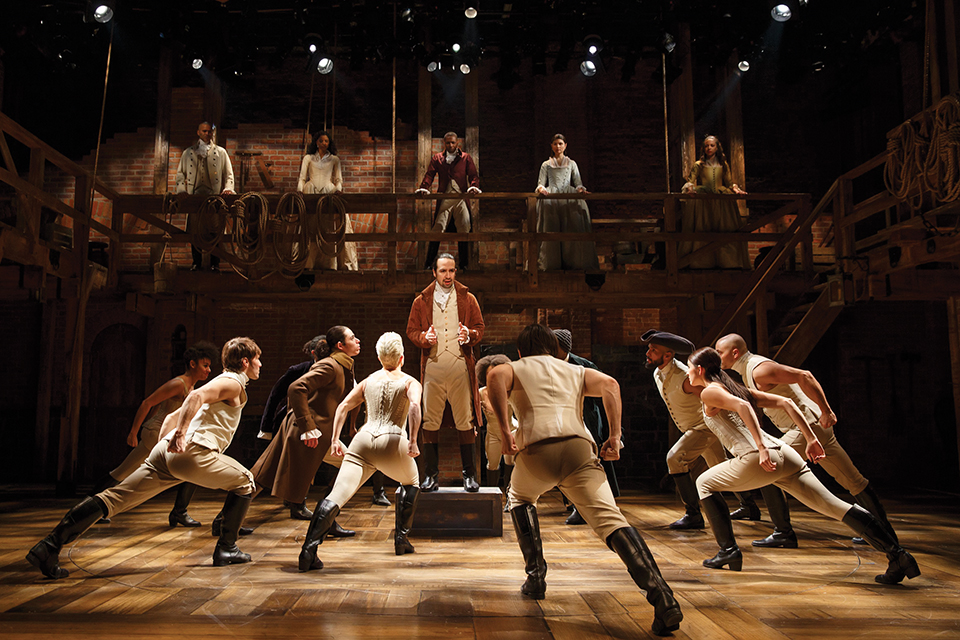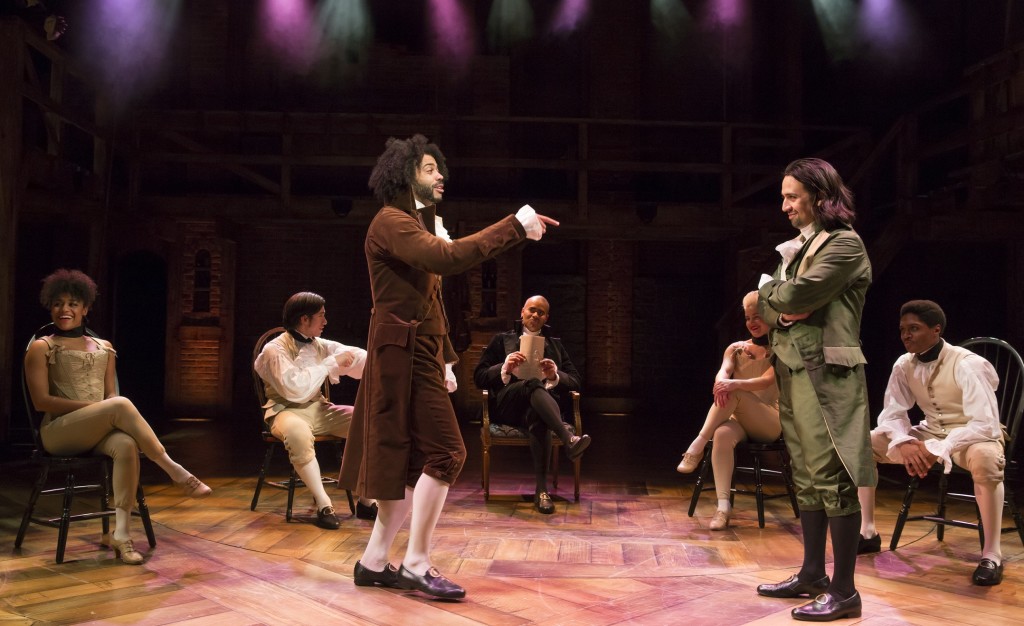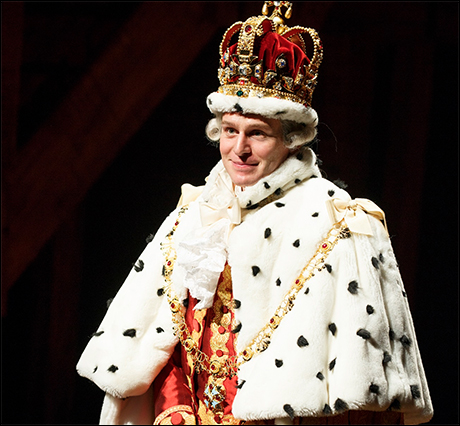
Who will tell my story when I’m gone?
It is something we rarely think about in a world of digital memorials. Why leave our story in the hands of someone else, when it’s already been immortalized in millions of bytes? Every message, post, or tweet tells another chapter in our histories.
But the obsession with our legacy and story is far from a millennial trend. It began at least 200 years ago, with the Founding Father of the federal bank, publicized political sex scandals, and making a name for yourself: Alexander Hamilton, the basis of Lin Manuel Miranda’s new and acclaimed musical Hamilton. Miranda, who plays Hamilton in the show, says that “If [Hamilton] was around today, he would have had his Twitter account deleted by a publicist because he would’ve responded to every troll.” This seems likely for a man who wrote and publicly disseminated a pamphlet about his scandalous extramarital affair, rather than leave it up to someone else to tell his story.
Storytelling and writing define history’s tenacious relationship with this founding father, who wrote his way out of poverty and orphanhood to become one of America’s early visionaries with the most long-lasting vision of what America would be. In Miranda’s Broadway musical, which premiered August 6, Hamilton’s scathing and brilliant essays and letters become the masterful wordplay of hip hop. He is the underdog immigrant who raps his way to fame, not unlike the Jay Zs and Kendrick Lamars of today.

Miranda is best known for his 2008 Tony award winning musical, In the Heights, which also uses hip-hop and rap music to tell the story of a Hispanic immigrant community in Washington Heights, like Miranda’s own upbringing. But when early American historical figures adopt this style, complete with period costumes, people’s first reaction is to laugh. From Miranda’s 2009 White House performance of “Alexander Hamilton”, the first song he wrote of what would later become a full musical, to Aaron Burr’s (played by Leslie Odom) self aware introduction as “the damn genius that shot [Hamilton]”, audiences can’t resist reacting to the apparent mismatch of high-energy rhymes with the institutionalized narrative of the American Revolution. And of course, much of the content and delivery of the show is hilarious. King George III, played by a show-stoppingly hilarious Jonathan Groff, makes a few appearances on stage as both the only white actor and the only pop singer so that he can serenade the colonies with British breakup ballads (Oceans rise, empires fall/We have seen each other through it all/And when push comes to shove/I will send a fully armed battalion to remind you of my love), and a fully afroed Thomas Jefferson (Daveed Diggs) comes back from France with an upbeat song and dance asking his peers what he missed in the past few years (just the entire revolution, TJ). And Okieriete Onaodowan is unforgettable as the loud-mouthed party boy Hercules Mulligan, who helps win the Battle of Yorktown with one badass rap and a lot of cheers.

Once the audience settles into the unusually fervid style and pace of this show, their reactions melt into the more genuine responses of fellow patriots as they side with both Hamilton’s friends and enemies. The story requires investment–without it, one gets lost in Andy Blankenbuehler’s modern and striking choreography, nearly constantly turntable, quickly morphing spotlights, and fast and witty narrative lyrics that create an intensity and energy as high as Hamilton’s borderline manic drive. By forcing us to pay attention cognitively and emotionally, Miranda puts us at his mercy for the few moments of silence in show. The ensemble performs a recurring, sharply choreographed, fast paced number (“Ten Duel Commandments”) every time a duel occurs, but when it comes to Burr and Hamilton’s infamous duel, the number appropriately and abruptly cuts to low lighting, low volume, and high intensity. Hamilton is left quietly reflecting as the other actors stage a brilliant flashback of the important moments of his too short life, and the stage goes dark.
The rest of the talented cast weaves their own humor and development around Hamilton’s tale, from George Washington’s (Christopher Jackson) emceeing cabinet meetings and farewell address to the nation in “One Last Time,” to Burr’s villainous boogie woogie number about his exclusion from the nation’s most elite political circles, to Eliza Hamilton’s, (Philippa Soo) heart-wrenching and elegant response to Hamilton’s extramarital affair. These powerful moments build much more of an ensemble production than one would expect for a musical named after one great man. In Miranda’s words, it “is the story of America then, told by America now.” But it is a story of ambition, relevance, and legacy that is lived now. It is the story of building and changing told from the perspective of people that, even now, often have their voices silenced.
The musical ends with Eliza, center stage, recounting all of her accomplishments and ways she kept Hamilton’s legacy alive in the fifty years she outlived him. Here is a woman of color playing an almost unknown woman who shaped history nearly as much as her famous husband, ending the show. Hamilton’s story of climbing and claiming the world for himself–our American dream story–is left for her to tell. When Hamilton died, Eliza told his story through continuing to publish his writings and establishing orphanages in his memory. For all Hamilton’s obsessions over his legacy, he could not have anticipated his early death and Eliza’s response. He certainly could not have anticipated he would be the subject of a sensational and revolutionary hip-hop musical 200 years later. But that is the beauty of storytelling; it is adaptable, transferable, and powerful. Hamilton reminds us that our own personal stories and our nation’s stories function much in the same manner–they are only ours for a time, and then they are reinterpreted in the voices of those who inherit them. The staff and cast of Hamilton has inherited the legacies of the birth of a nation, of an ambitious man who helped build it, and of how it has fallen short of its original ideals today. They have remixed, reinterpreted, and reimagined all three.
Photo credits: Joan Marcus and Playbill.com

Judith Lee
August 8, 2015 at 4:44 am (2 years ago)Ms. Laurenzi, I appreciate your illustrious review of Hamilton. You have beautifully and deftly captured the context, storyline, glimpses of the characters and pace of this new play. I am excited to go see it!